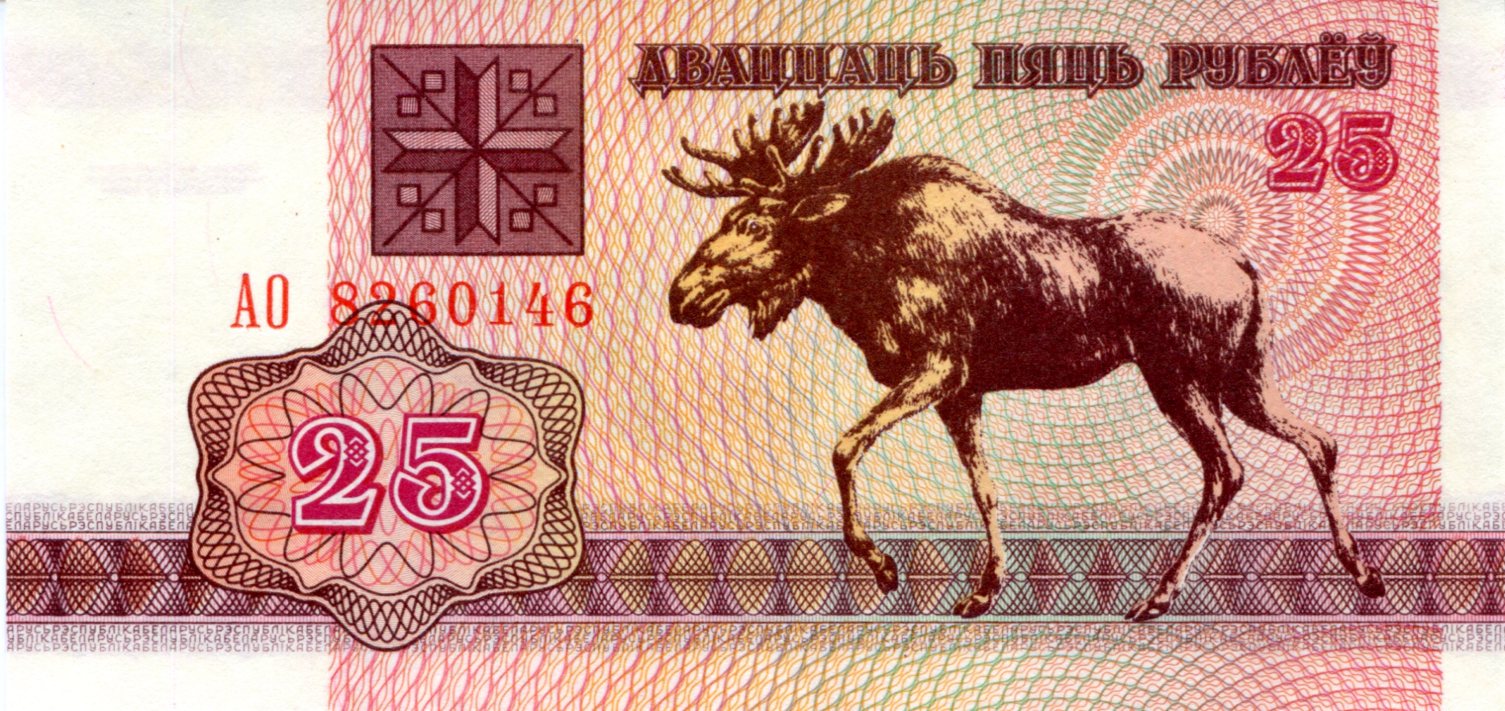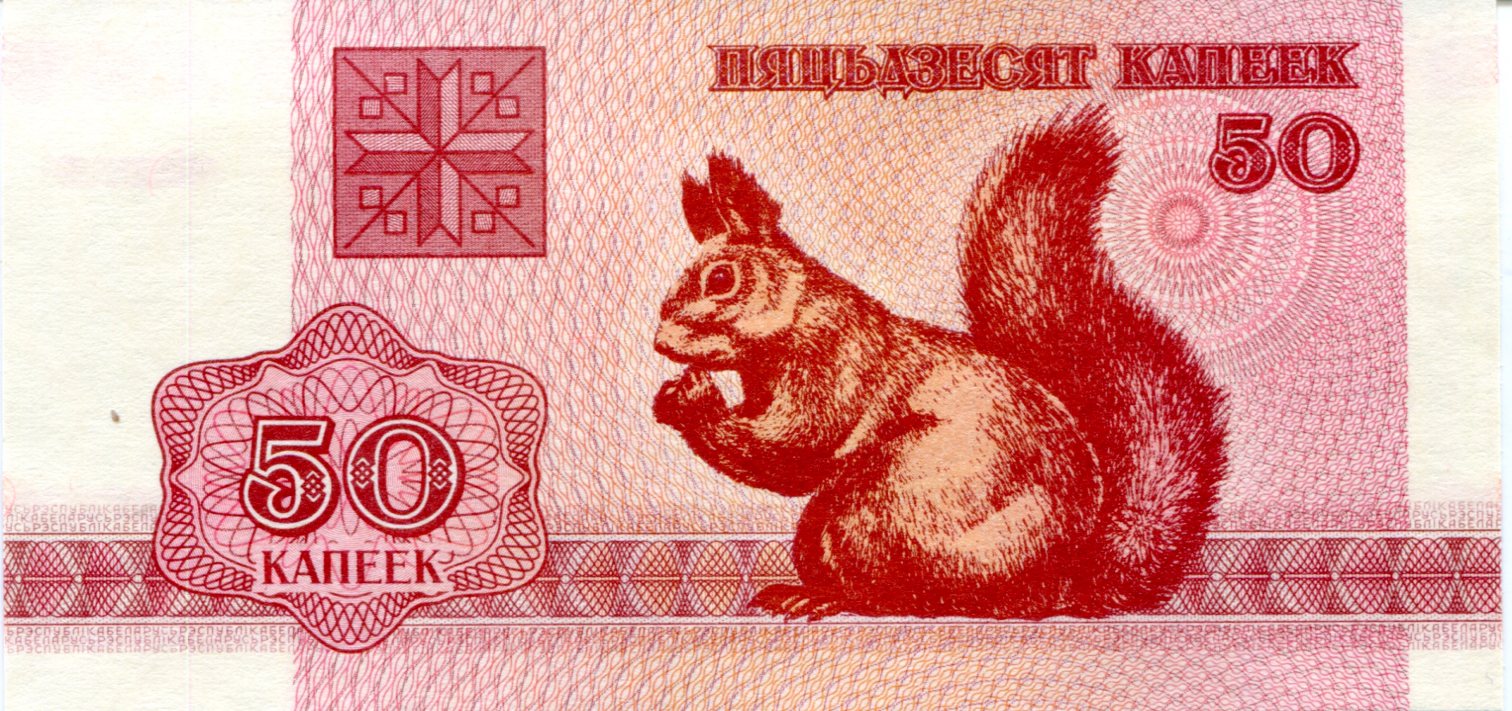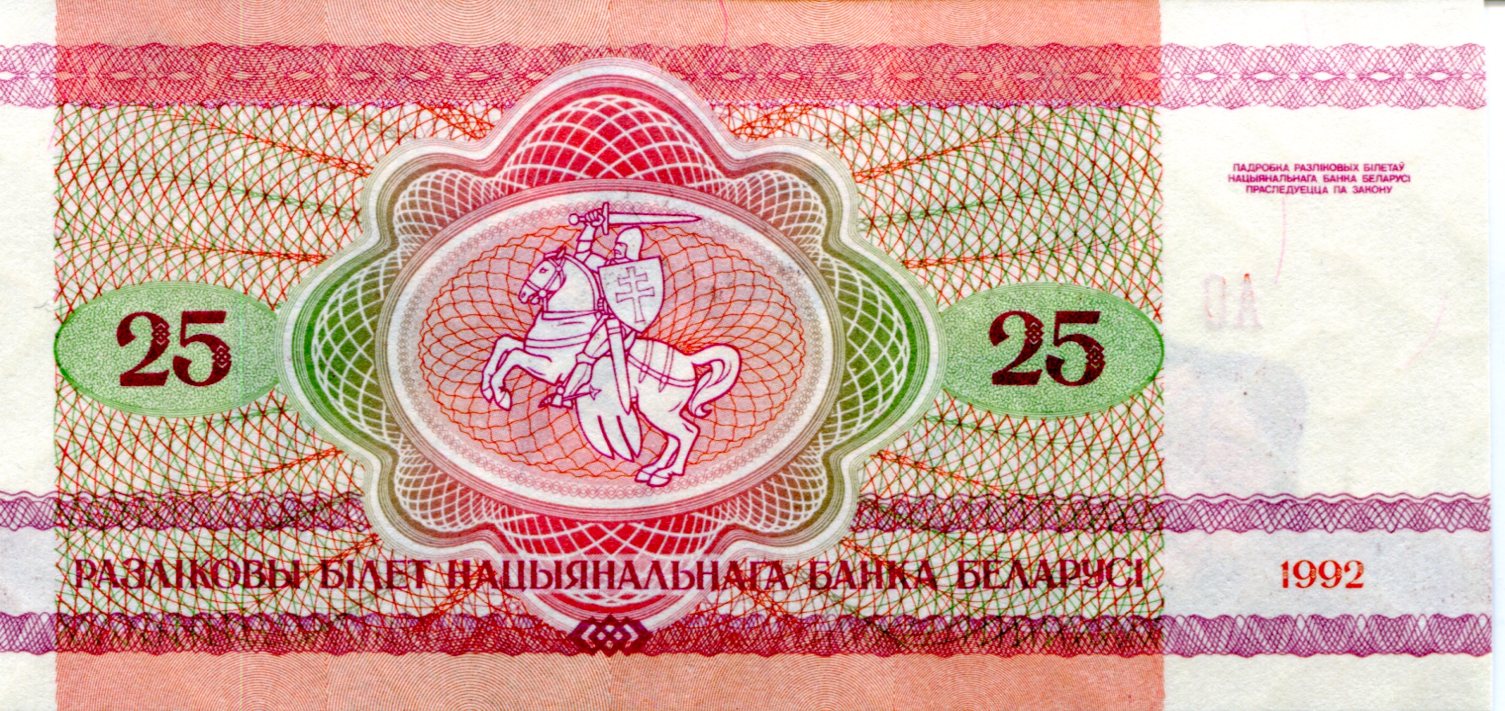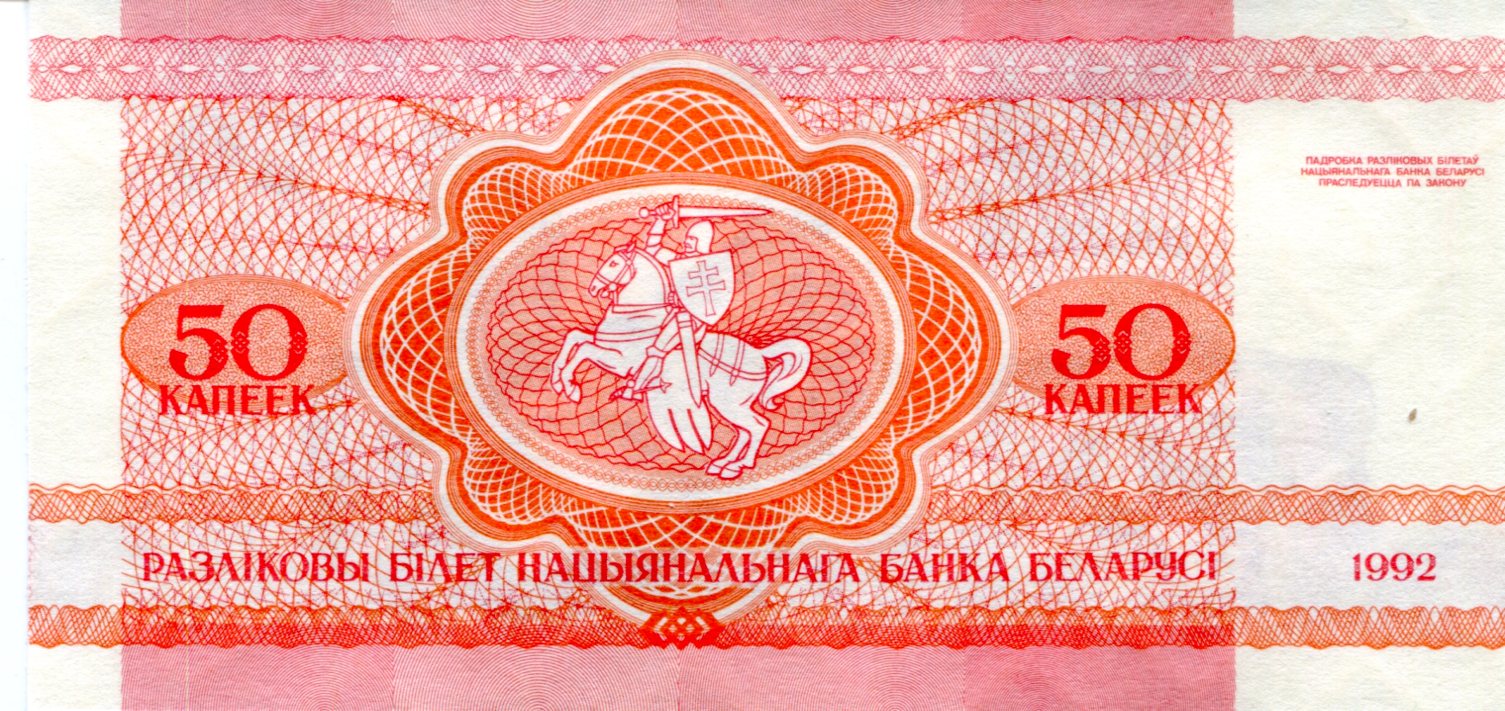More snow today. Makes me wonder about the personification Old Man Winter. He’s pretty spry this February, that old man.
Tucked away in my stash of near-worthless banknotes are a few from Belarus, a former Soviet republic that retains more than a few vestiges of the red old days, I’ve read, such as autocracy and a heaping-helping of central planning.
Its base currency is the ruble, too. In theory a Belarusian ruble is worth about 38 US cents these days, but not these notes: there was a redenomination later.
This is the obverse of the 25-ruble note, from a series that began in 1992 and lasted until 2000. The notes’ size is pretty close to that of Monopoly money. Were those dimensions an inside joke on someone’s part?
 Moose money. Belarus also used to have squirrel money.
Moose money. Belarus also used to have squirrel money.
 Not 50 rubles, as I thought as first, but 50 kopecks. I suppose moose ought to be a lot larger than squirrel. Not that Belarus’ currency was ever really that large. According to Wiki, the ’92 series was “introduced in denominations of 50 copecks, 1, 3, 5, 10, 25, 50, 100, 200, 500, 1,000 and 5,000 rubles.”
Not 50 rubles, as I thought as first, but 50 kopecks. I suppose moose ought to be a lot larger than squirrel. Not that Belarus’ currency was ever really that large. According to Wiki, the ’92 series was “introduced in denominations of 50 copecks, 1, 3, 5, 10, 25, 50, 100, 200, 500, 1,000 and 5,000 rubles.”
3? Yes. Sorry I didn’t get one of those when I bought my wad of 50 or so international banknotes for pennies apiece.
Anyway, inflation soon kicked in: “These [denominations] were followed by 20,000 rubles in 1994, 50,000 rubles in 1995, 100,000 rubles in 1996, 500,000 rubles in 1998 and 1,000,000 and 5,000,000 rubles in 1999.”
The reverse of the old ruble notes are all roughly the same. At least, mine are — different only in color.

 The horse and rider is referred to as Pahonia, I understand, and is of considerable age, but I don’t want to go too deep into its history at the moment. As a symbol of Belarus, it seems to have been revived after the end of the Soviet Union, but not for long. Long enough to be on my moose and squirrel money, however.
The horse and rider is referred to as Pahonia, I understand, and is of considerable age, but I don’t want to go too deep into its history at the moment. As a symbol of Belarus, it seems to have been revived after the end of the Soviet Union, but not for long. Long enough to be on my moose and squirrel money, however.